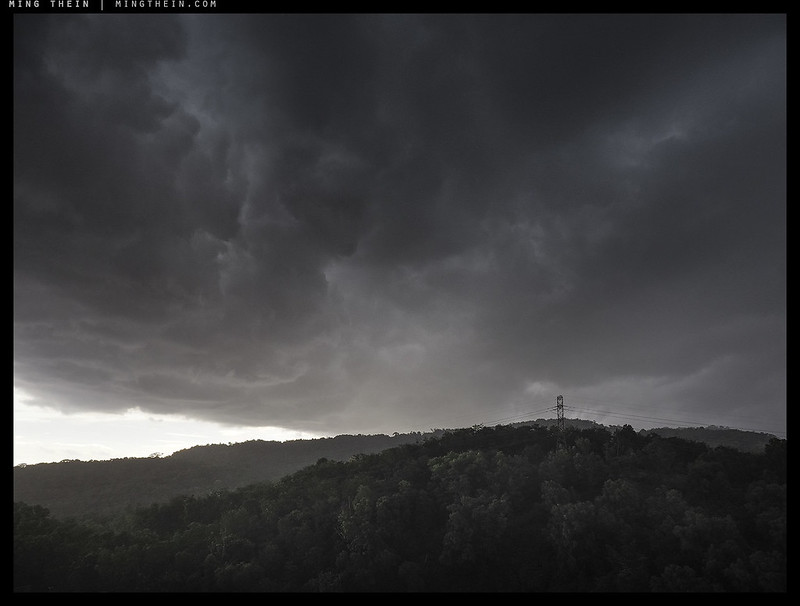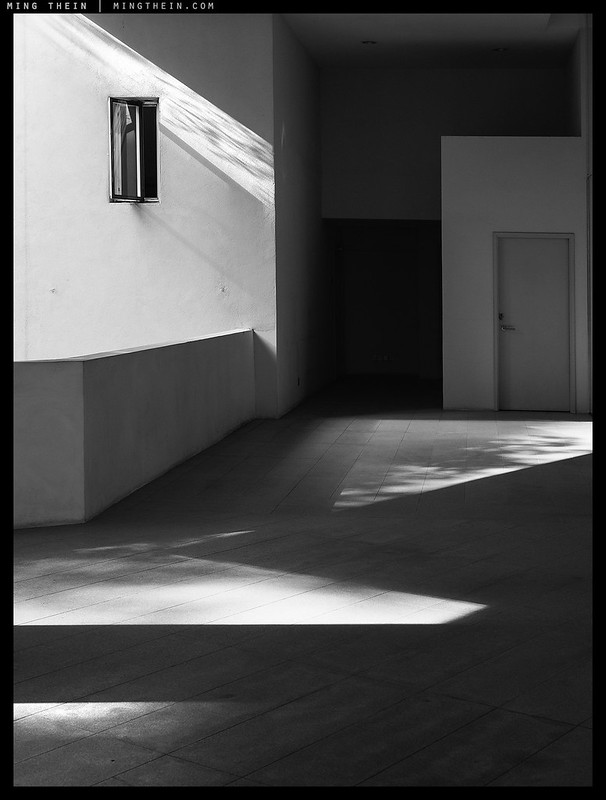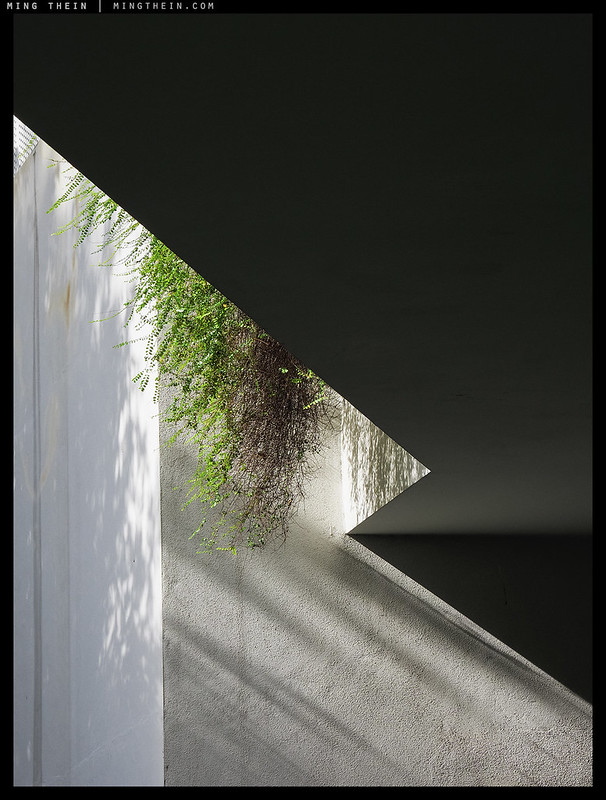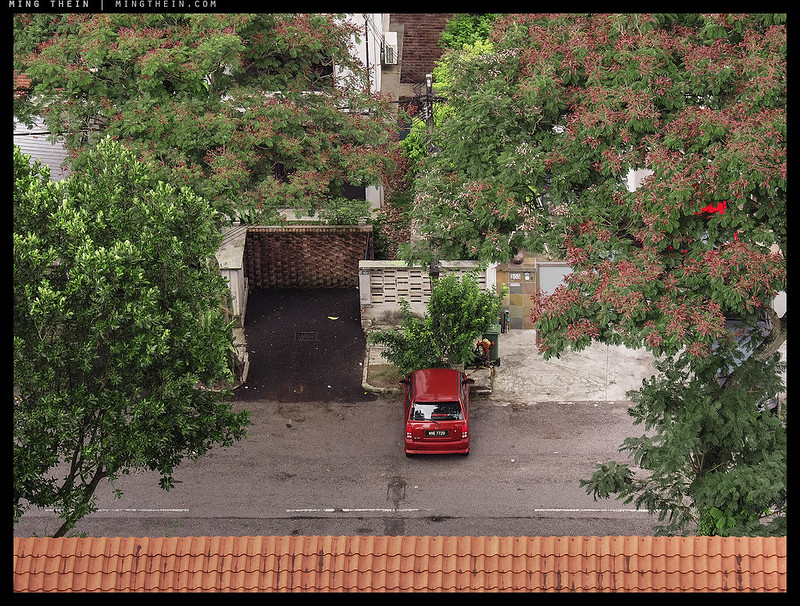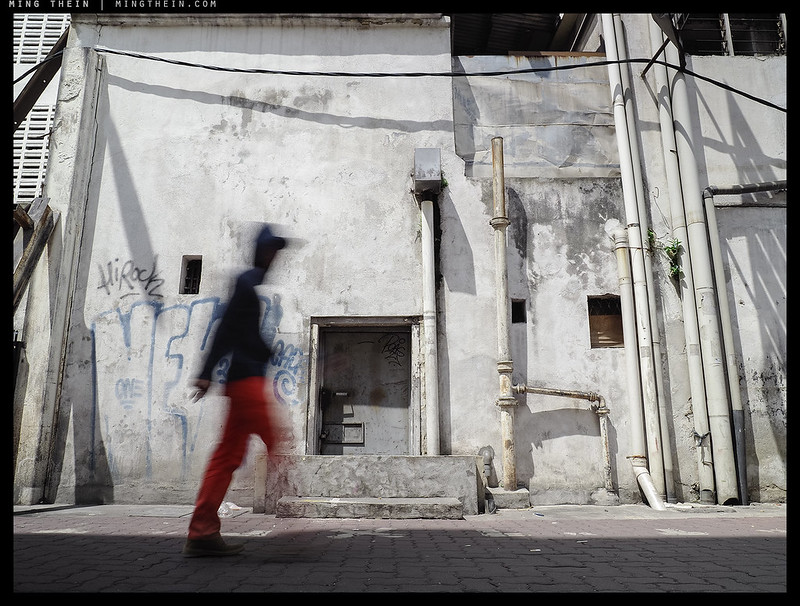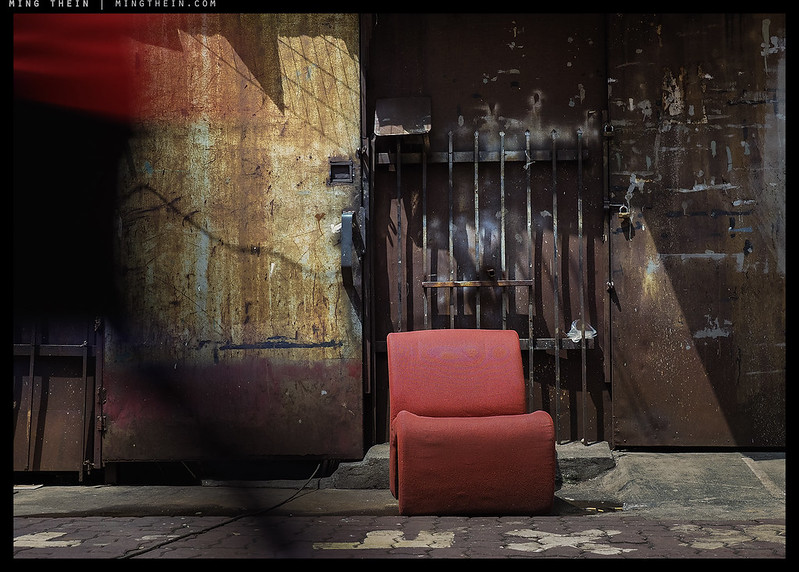The Olympus E-M1 Mark II Review, by Ming Thein
I’ve had the chance to use a final preproduction (i.e. should be no difference to shipping units) Olympus E-M1 Mark II for the last couple of weeks, thanks to Olympus Malaysia*. The camera was supplied with the new 12-100/4 IS PRO and the 25/1.2 PRO lenses. What follows will be not so much the traditional ‘review’ as series of thoughts on the camera (hereby abbreviated to EM1.2); I’ve previously made my current position on hardware and reviews clear and will again state upfront that this evaluation is performed in the context of the images I usually make, not every possible photographic situation. There are some subjects I just don’t shoot, and it would not be very useful for me to comment on the camera’s performance in these areas anyway. With that aside, let’s proceed.
Important note (and you’ll see why, later): all accompanying images were shot handheld, and edited from camera JPEGs – there is no ACR support for the E-M1.2 yet. This of course means tonality and color will likely deviate from my ideal output intention. Images are clickable for larger versions. I’ll also be adding more images to the flickr gallery here.
*Though some people were apparently paid by the mothership to go to Iceland…
The key headlines for the EM1.2 are a new, much faster 20MP sensor with 121 PDAF points, up to 4K 24P video at 237Mbps data rate (10x the E-M1, 5x the E-M5.2), and speed, speed, speed: 18fps RAW, 60fps full resolution JPEG, electronic front curtain and full electronic or full mechanical shutter options and high resolution sensor shift. There’s also a post-capture mode which saves the last X images (user determined) after you lift your finger off the shutter*. The EVF remains the same, but 120hz refresh is now default. ISO range extends from ‘LOW’ (notionally 64) to 25600, with a native level of 200. The IBIS system is updated and now works in concert with in-lens OIS on certain lenses such as the 12-100/4 for even greater effectiveness. (It won’t work with Panasonic OIS lenses though; it appears M4/3 consortium cooperation only goes so far.)
*Seemingly useful, but in practice reuiqres some significant retraining of muscle memory to deploy effectively.
It now also has dual SD card slots, though only the primary slot supports UHS-IIBuffer testing suggests to me that it can really use all of that speed, as a burst of 10 RAW+JPEG SF files writes in around three seconds with the 280MB/S Sandisk cards. That said, if you are mirroring to the second card – be prepared to wait and run into limtations caused by the slower slot. 4K recording works best withs the primary UHS-II slot and fast cards, of course.
Anybody who’s used the previous E-M1 will be at home very quickly; the ergonomics are vastly improved because of a thicker/taller grip, and some repositioned buttons. The new camera is physically larger, and the changed proportions around the grip have made it cosmetically very similar to the old E-520 DSLR. It fills the hand much better, and I think is as comfortable or better than the D750 (for reference). Unfortunately, the packing volume has also expanded quite a bit: with the 12-100 fitted, size and weight are similar to a D750 and 24-120/4 VR. It’s almost exactly the same size as the X1D and 90mm, actually. I suspect that in the long run, we’re going to see most cameras settle on something around the same size – it just works ergonomically from a comfort and endurance standpoint, especially if there’s any possibility that larger lenses may be used.
The slightly larger size also allows for a headphone jack and much larger battery – with 50% more capacity at 1720mAH, taking up probably 25% or more of the internal volume of the camera. The original camera wasn’t exactly a power hog, but battery life on the new one is stupendously impressive by any standards: typical consumption numbers are 20% drain for 500 frames shooting RAW+JPEG and with IBIS and lens IS on, and about 1hr total runtime. We’re into D5 territory and beyond. One battery may well get you through a week if you’re a careful shooter, let alone a day.
Other ergonomic changes include a touch sensitive tilt and swivel screen similar to the E-M5 Mark II, which can be used as a trackpad to move the AF point when your eye is to the finder, but lacks multitouch or the ability to double-tap-to-100%. Finally, the right side strap lug has been relocated to the top panel so it doesn’t dig into your palm. Hooray! It was actually the first thing the Olympus folks told me when I went to collect the camera – though they quickly added it was because of the taller SD card door, not my complaints. That taller door hides dual SD slots, which can be configured to mirror, overflow or stills on one and video on the other.
Under the hood, we see some menu reorganization with nested submenus to avoid page scrolling. The camera remains hugely customizable, to the extent that you may well need a good half an hour to navigate all the options (and have trouble finding them again afterwards). A customizable ‘my menu’ is sorely needed, and an option to save settings to an SD card either for backup or transfer to another camera – especially when it takes the better part of 30min to set up fully. There is an option to transfer settings via a computer and special software, but this is hardly practical in the field.
Despite the customizability and the menu reshuffling, we’re still missing two important things. First is the option to separately set a video picture mode and exposure settings – it currently follows whatever is set for stills. Second, and perhaps more critical, is the ability to customize auto-ISO thresholds. It’s limited to choosing the upper ISO limit and a hard fixed minimum shutter speed, regardless of lens attached. There is an ‘auto’ shutter speed option, which appears to be limited to 1/focal length rounded to the nearest selected exposure increment.
Given the effectiveness of the IBIS system, especially in concert with lens IS – it’s surprising we can’t just have a 1/fl multiple. I was able to successfully and consistently handhold four and at the wide end even five stops, which is even better than any of its predecessors. In real terms, this means we’re looking at critically sharp results at the 100mm end of the 12-100 (200mm-e) with a 1/10s or so shutter speed, and up to 2 seconds at 12mm. One important note: to get the most effect out of the system, you must allow a second or two of half press for both the stabilizers to ‘lock in’; it will become very clear in the EVF when this happens – the view suddenly becomes rock solid. However, it may be a little frustrating at times, too: the system is so effective that making small adjustments to composition is difficult without either a sudden jerk or no motion at all (the camera interpreting your slight reframing as unintended motion).
There are two obvious applications for this: firstly, clawing back some image quality on larger (and less stabilized, or unstabilized) formats – you could well be shooting handheld at ISO 200 instead of 1600 or 3200 to match depth of field, and in all likelihood the EM1.2 may produce results on par with a D750 for dynamic range, noise etc. Aside from video – to be discussed later – the other obvious possibility is to leave the tripod behind entirely. The typically borderline exposures in the low 1/x second range now become handholdable for most focal lengths, which opens up significant possibilities in incorporating motion into your images. As you can see, this is what I’ve done for the images accompanying this series (shot during the daytime at base ISO with an ND filter, long exposure and entirely hand held): the EM1.2 isn’t so much about speed for me (despite this being arguably the fastest and most responsive M4/3 camera yet) – it’s about three things: using motion; handheld video; and compressed perspectives with everything in focus that would require stacking or tilt on larger formats.
I wish I could say something definitive about image quality, but at this point – it’s JPEG only, with no ACR support (and therefore no way for me to make a relative quality assessment to other cameras and its predecessor). But what I can say is that between EFC or full E-shutter (I didn’t use the regular shutter; there wasn’t any need to) shutter shock is a non-issue, and trust me, I was looking for it. As usual, Olympus’ JPEGs are pleasing and there are extensive options for processing in camera, but they’ll never match a well-processed raw file. It’s also worth noting that the pipeline still remains 12 bit only. For similar reasons, I can’t say much about the 50MP high res mode, other than it’s not viable handheld. The high res JPEG looks much better than the output from the E-M5.2, with fewer artifacts and much better handling of motion, but there’s still a little ‘crunchiness’ to the file. I’m very curious to see how a raw file shot this way compares to a single capture raw – something I’ll be revisiting with the Hasselblad on the other side of the bench. But so far, for things that don’t move, and if you’ve got a tripod: it’s looking promising.
High ISO noise and dynamic range are slightly better than the 16MP predecessors, but nothing to get wildly excited about. I’d still draw the limit for clean files at 1600, with 3200 for emergencies (or perhaps one more stop if you don’t mind entirely black shadows). Anything above 1600 starts to display shadow noise in the midtones – and this with JPEG processing and NR set to ‘low’; I suspect the raw file might be much noisier. Dynamic range remains somewhere in the 12 stop region, so careful exposure is a must. Note that the ‘Low’ ISO setting is a pull setting, and has less dynamic range than ISO 200; you can see this clearly when you change ISOs if you have the live highlight clipping on. I’m honestly not sure why you’d use this instead of an ND filter. At the moment, my feeling is that there is a little better highlight extension/rolloff, but this may come at the expense of some shadow recoverability – I think this is actually a good practical tradeoff, but will need to examine some raw files first to confirm this.
My primary interest in this camera is for video work. We currently use a pair of E-M1s (the Hasselblad X1D video was filmed with this setup, almost entirely handheld except for the timelapses) largely because of their stabilizers. This is something which the other manufacturers have yet to catch up with: Olympus’ IBIS is so good that we don’t need rigging, gimbals or stabilisers; pans and camera moves are smoothed and damped by the IBIS, and as a result can film far more stealthily and easily than with a larger camera. The compromise has been in data rates and overall image quality; though given some careful exposure and clever post-grading, the difference isn’t so important for most applications. We have clean HDMI out, but no log gamma color profile and still motion-JPEG codec only; – ‘flat’ is the closest we get to easy grading. It falls behind the competition, but is still streets ahead of its predecessor. I have trouble with this, because on one hand – the video output from the competition (e.g. A7 series, GH4) still remains superior, but practical results from the Olympus can’t be replicated.
The good news is video quality is a massive leap above what the E-M1 and E-M5.2 delivered. 4K (UHD or Cinema) footage is cleaner, more detailed, smoother, has less artefacts and better color than the previous 1080P modes. 1080p50 on the E-M1.2 is very nice indeed, but to be honest – I’d just shoot 4K with this thing. Unfortunately, dynamic range is still limited, so care is required with exposure. At least thanks to the increased data rate, there’s a bit more recoverable latitude in the shadows now before things start artefacting and posterising. For reference: 30s at UHD takes up approximately 170mb, so this is where your 128GB UHSII cards start to come in handy. All in all, even though we only have a motion JPEG file format (I suspect this has something to do with ability to extract still frames, especially in the post-capture mode or high speed shooting modes) – video on the E-M1.2 just looks great; in a word, far more natural. Factor in the improved stabiliser – which happens to do very well at smoothing out camera moves and float – and you’ve got something which is worthy of serious consideration for filmmakers, especially those who need a good handheld platform.
Continuous AF has long been the limiting factor of most mirrorless systems, at least until PDAF points on-chip were introduced. Olympus has lagged behind Sony, Fuji and even Canon in this arena; the original E-M1 couldn’t really track moving subjects, and continuous focus was hit and miss. The EM1.2 is much better – I’d say something like a 70% critical hit rate with my erratically running toddler, and acquisition and tracking were of course better with lower frame rates. I suspect the camera will do much better in the hands of a seasoned sports photographer and more predictable moving objects – I’ll leave further testing in this arena to those whose normal cameras don’t have just one big AF point. Suffice to say: I didn’t consider C-AF viable before, but seems to be now. It still doesn’t give me quite the same level of confidence as Nikon’s latest AF system in the D5/D500, but it’s at least comparable with the midlevel 39-point systems.
Unfortunately, despite the PDAF points on sensor, the camera still has the same achilles’ heel as every contrast-detect based camera: it struggles with strongly backlit situations and simply can’t find focus. It inevitably defaults to the distance which maximizes the clipped areas (which makes sense, as CDAF works by maximizing contrast – and this situation satisfies that criteria).
Let’s talk about the lenses for a moment: the 25/1.2 is impressive because of its performance and aperture; it’s tack sharp in the centre wide open, with the corners improving as you stop down a little. Voigtlander 0.95 rendering this is not. However, it still has the depth of field transition properties of a real 25mm focal length, not 50; the whole idea of ‘equivalence’ to a 50/2.5 on FF is moot because the falloff in the transition zones isn’t what you’d expect it to be. Oddly, I didn’t use this lens that much; the 12-100 was far more interesting both because it really does cover pretty much everything you’d ever need, and because the combined stabiliser was so effective I only went over base ISO a couple of times, and even then mostly for testing, though worth noting that the stabiliser system doesn’t seem to work so well when the camera is pointed directly downwards or upwards. This would be the lens I’d get. It too, is impressively sharp wide open, with corners improving as you stop down. Past f8 you’re in diffraction territory anyway – this basically means you’ve got three working apertures (f4, f5.6, f8) – it’s actually not as big a deal as it appears. There is a degree of software correction going on, but I personally find it less intrusive than the 7-14 or 40-150 – that said, I didn’t shoot much architecture this time. More importantly, for video users, the lens has a much nicer transition rendering than the 12-40; I didn’t see any really objectionable artefacts in OOF areas. In neither lens did I see significant asymmetry or decentering, though one copy of course does not make for a comprehensive sample. Given the complexity of both lenses, I’d highly recommend testing the copy you’re going to buy in person before committing.
If you asked me today, for somebody starting out, what would be a decent single wide-envelope-do-it-all-under-all-conditions camera and lens combination – I’d probably have to go with the E-M1 Mark II and the 12-100, based on the way I typically shoot – with a fast prime or two lie the f1.8s thrown in for DOF control or very low light. The EM1.2 is so supremely competent and sufficient that it’s really all the camera most people will ever need; in fact, it may well be a bit too much camera – the menus could really use some simplification, and most additional features are gravy; it’s also heavier than most people are willing to carry around.
Personally, we’re still evaluating video under a wider range of conditions – this remains my main use for it, though the possibility of making highly compressed perspective images with extended DOF is quite interesting, too (and requires a smaller sensor). More interesting if you can apply high res mode for a larger output size, too – but this obviously doesn’t work handheld, or with all subjects.
As usual, there are the advantages of electronic finders to consider, too: accurate exposure and DOF previews, focus magnification, video in finder (and better stability through face-bracing) plus gain up in the dark and information overlay. You can see the whole frame with glasses on. The EM1.2’s EVF is excellent but no longer state of the art – that goes to the Leica SL. However, it still has the same disadvantages: it’s too bright in dark situations, ruining your night vision, and it’s too dark in bright situations, washing out to flat monochrome (at best). A better eyecup would help in the latter situation. Personally, having used a lot of EVF cameras over the last few years – I’m back in the optical finder camp for now, providing the optical finder is good enough. For what it’s worth – I’d consider the D750-D810 finder (without magnifier) mostly a wash with the EM1.2’s EVF; the Hasselblad H is at another level – as it shold be, for a finder alone that costs nearly as much as the EM1.2 body, and let’s not even talk about the V: nobody makes cameras with viewfinders like that anymore.
If you get the impression that I liked the camera very much, you’d be correct. It’s well-built, fully featured, ergonomically comfortable, fast, responsive, and moreover – trust- inspiring, in a way that few cameras are. You have a high level of confidence in getting the shot you had in mind; and importantly, being able to do it under a wide range of shooting conditions. For want of a better word, it felt solid. I suspect this is not going to be a mass appeal camera in the same way its predecessors (E-M5, E-M1) were: pricing puts it in competition with the flagship D500 and midrange D750 level cameras, along with the larger-sensor XT2, XPro2 and A7II. Even though the value proposition amongst these is very, very different, there’s bound to be cross-shopping and comparisons because of the number on the sticker.
This is undoubtedly going to work against Olympus, unless photographers get to hold and use the camera in the hand first. I have made my feelings on Sony abundantly clear in the past, and I don’t have anywhere near the same degree of confidence in the output (or reliability, for that matter). Olympus needs to take care with the menu system, though: it’s close to being the same level of unintuitive maze Sony has. I feel more confident with the Olympus than the brief use I had of the Fujis, though that could be a familiarity thing as much as anything else. I still think all of them have too many menus. As for the DSLR options, I suspect that on an absolute image quality basis, the differences aren’t that great once stabilizer advantage is factored in, as well as lens size/cost/speed and equivalent depth of field. However, if you do need higher shutter speeds because of subject motion, then a bigger sensor is still better. I don’t have a preference here personally because the use cases and relative merits are so different.
In conclusion: the operational, haptic, shooting envelope and operating experience side of things gets top marks. Image quality is a notch up on its predecessor, but how much up is too early to say until we get full raw support and can make meaningful comparisons. I’d say upgrade if you’re a first generation E-M1 or E-M5 user, but expect solidly incremental rather than revolutionary changes. MT
Thank you to the folks at Olympus Malaysia for the loan. Note: the camera has since been returned, so any questions will be answered from memory. The Olympus E-M1 Mark II is available here (B&H, Amazon), the 12-100/4 here (B&H, Amazon) and the 25/1.2 here (B&H, Amazon)
__________________
Visit the Teaching Store to up your photographic game – including workshop and Photoshop Workflow videos and the customized Email School of Photography. You can also support the site by purchasing from B&H and Amazon – thanks!
We are also on Facebook and there is a curated reader Flickr pool.
Images and content copyright Ming Thein | mingthein.com 2012 onwards. All rights reserved
JOIN OUR FACEBOOK GROUP

Ming Thein is a commercial photographer and writer based out of Kuala Lumpur, Malaysia. He specialises in corporate documentary and product photography, and is also currently Chief of Strategy at Hasselblad.




